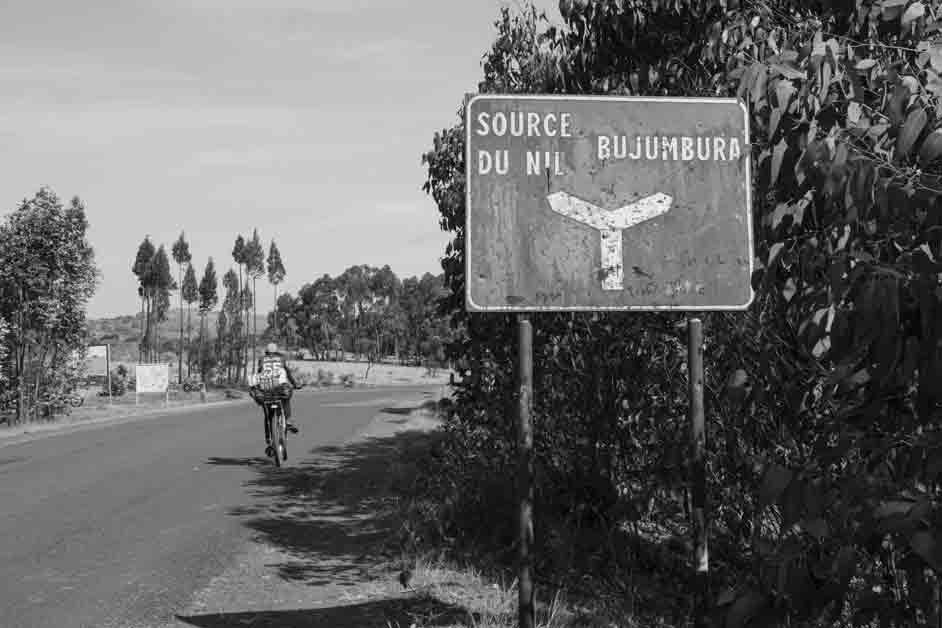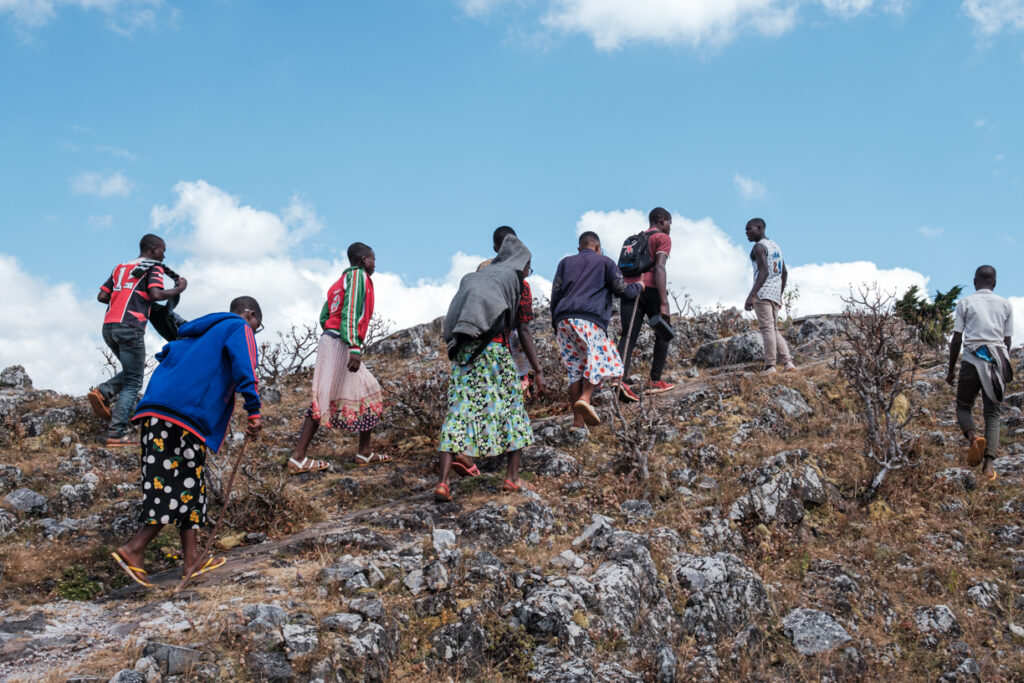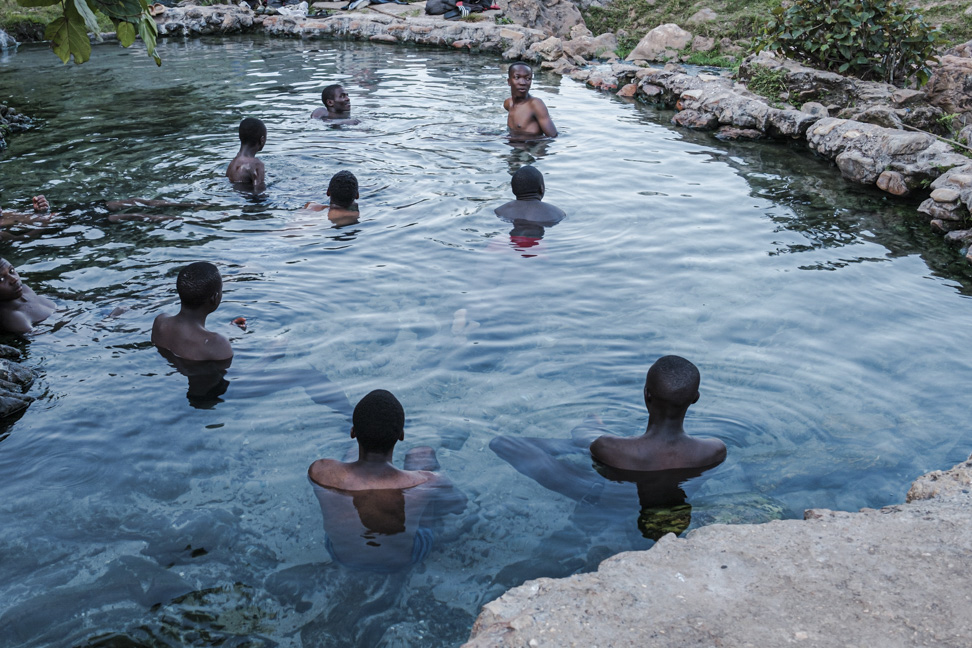
The Nile River flows an impressive 6,695 kilometres, winding through multiple countries before reaching the Mediterranean Sea. The two main tributaries, the White Nile and the Blue Nile, converge in Sudan’s capital, Khartoum. The White Nile is commonly traced back to Burundi’s highlands, and Rutovu is one of the recognised starting points.

Youth make their way up the hilly terrain, venturing towards Rutovu. Photo: The Niles / Nitanga Tchandrou
Herman Nahimana, a former military officer who has spent the past two decades guiding visitors to Rutovu, recalls his first visit to the Nile’s source. This journey ignited his love for sharing his homeland’s stories. “I met an environmentalist named Albert Mbonerana,” he says. “He handed me a brochure about Burundi’s landscapes, and that moment stayed with me.”
The German explorer Burkhart Waldecker is credited with marking Rutovu as the Nile’s southernmost source in 1934. After a gruelling four-year journey from Egypt to Burundi, he identified Rutovu and erected a pyramid to commemorate his discovery, paying homage to past explorers.

A pyramid built by Waldecker marks Rutovu as one of the sources of the Nile, recognising its significance in exploration history. Photo: The Niles / Nitanga Tchandrou
In a community near Rutovu, we meet Delphin, a twelve-year-old boy filling a water container at a tap installed in 2009. Delphin, the youngest of seven, knows the importance of this clean water supply. His mother, Pascasie, recalls, “Before this tap, we relied on the Jiji River, but it often made my children sick.”

The Jiji River, one of the smaller rivers in the area, flows near Rutovu. Photo: The Niles / Nitanga Tchandrou


Cows graze near the Jiji River, another critical water source for residents. Photos: The Niles / Nitanga Tchandrou

Men swim in spring waters near the Nile’s source in Rutovu, a place where swimming is restricted for the nearby Batwa community. Photo: The Niles / Nitanga Tchandrou
Nearby, Ndabegamiye, a father of ten and a leader of the local Batwa community, faces challenges despite living close to Rutovu. “Our children often get sick, and finding secure land is a struggle,” he shares, pointing to the grass houses his community builds only to be repeatedly displaced.

The Batwa community’s grass houses symbolise a resilience honed through adversity and their deep connection to traditional ways. Photo: The Niles / Nitanga Tchandrou
While life near Rutovu offers access to water, it also presents daily challenges. Delphin, Pascasie, and Ndabegamiye’s stories reflect a complex relationship with the river that sustains them, highlighting the community’s social and environmental issues. Their experiences show the need for fair access to clean water and sustainable development.

Delphin heads home after collecting water, a daily necessity made easier by the community tap near Rutovu. Photo: The Niles / Nitanga Tchandrou
As our journey through Rutovu ends, we are reminded of the historical and cultural significance attached to the Nile’s many sources. Rutovu, with its people and landscape, remains a place where nature’s beauty meets the realities of daily life.